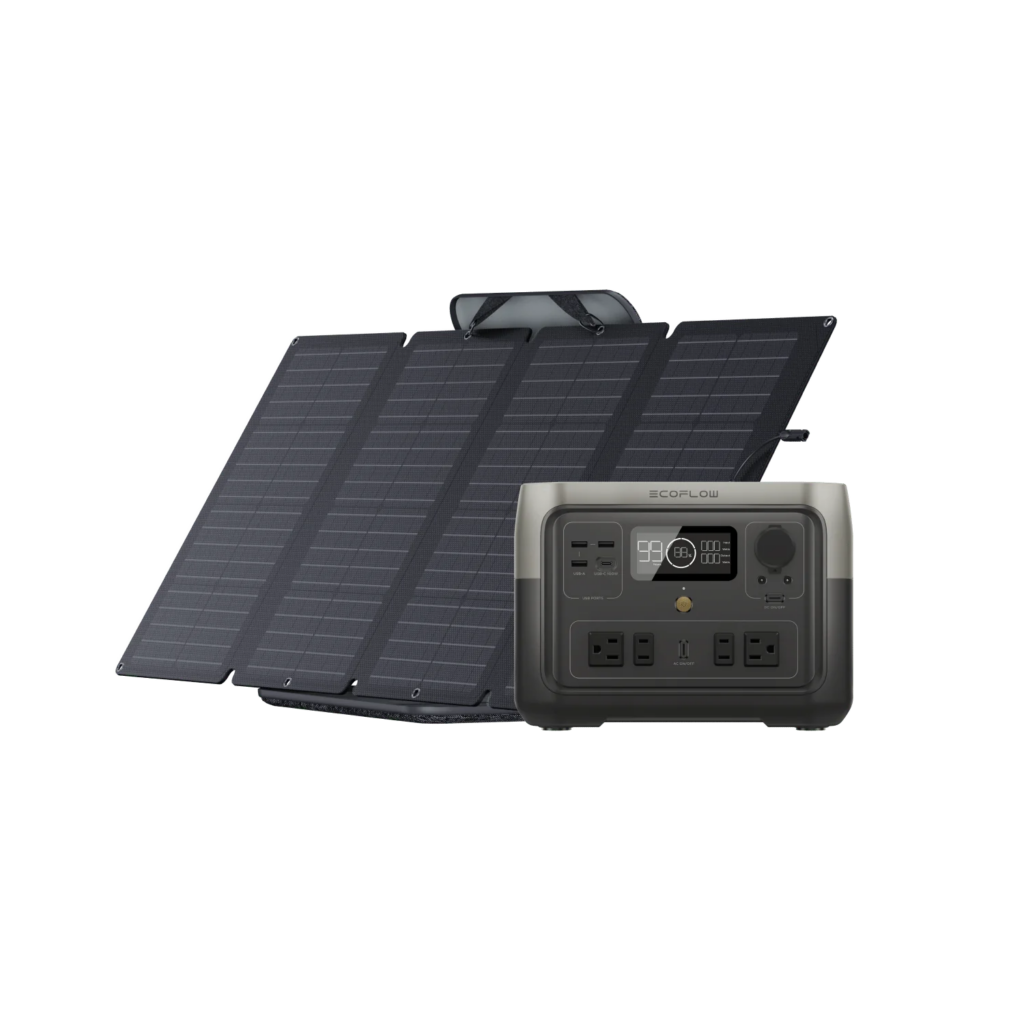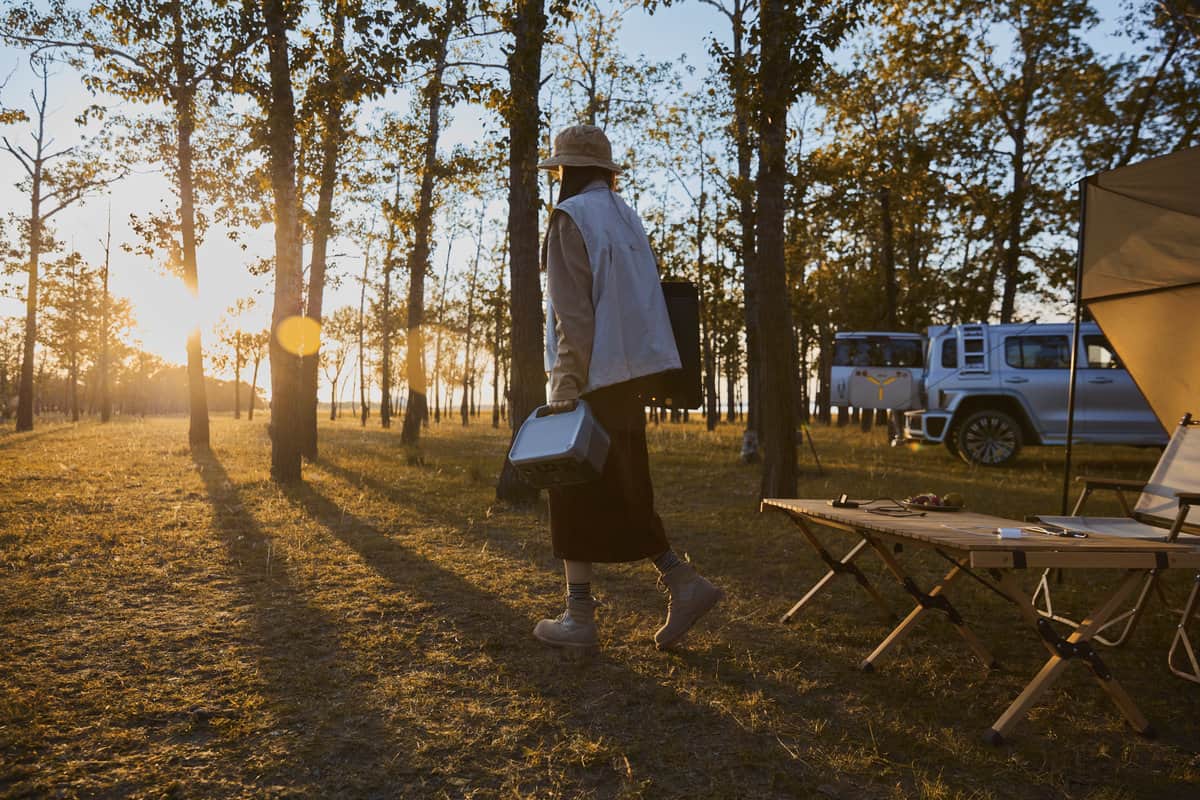Table of Contents
For those looking to depart from the nuances of ordinary, everyday life, camping offers an escape into the towering trees and quietness of nature. If you’re looking to embrace the untamed beauty and tranquility of the great outdoors, primitive camping offers a profound connection with the vast wilderness.
Keep reading to learn what primitive camping is, its benefits, how to prepare correctly, what gear is needed, and how to find the perfect location to start your journey.
So, What Is Primitive Camping?
It’s a style of camping with no amenities or facilities available. You pack everything you need to survive, sleep, eat, and head out into the wilderness. There are no designated spots, bathrooms, or running water.
A tent or hammock is usually a shelter, with only the bare minimum supplies you need. Primitive camping usually happens in areas away from roads without cell service, so you can escape technology and focus on the basics.
What’s the Difference Between Dispersed and Primitive Camping?
With dispersed camping, you still need to pack the same things, but there might be access to some facilities. Dispersed camping usually occurs in areas designated for it by land management agencies. There might be bathrooms and running water available. These areas are also close to other camping grounds, so if help is needed, it’s easy to reach someone.

What Are the Benefits of Primitive Camping?
Solitude
Primitive camping sites are remote, off-grid, and isolated. You’re in the wilderness without electricity, Wi-Fi, and cell service. You can escape the hustle and bustle of everyday life and lean into the privacy and harmony of the great outdoors—the ultimate relaxing vacation. No neighboring campers are being disruptive, and there’s plenty of room to spread out.
Affordability
Compared to other camping methods, primitive camping is cheap. There are no overhead costs for an RV, electrical use, or reservation fee. Instead, you’ll have initial fees for equipment. You’ll be able to enjoy the wonders of nature without worrying about the cost. You can easily walk to new places without the headache of vehicles.
No Reservations
With traditional camping, getting a reservation can be challenging during peak seasons. And the reservation fee can be costly. Primitive camping requires no reservations. Specific areas might need permits, so check with the park’s regulations for cost and availability of permits.
Freedom
Since there are no designated spots or campground rules, primitive camping offers freedom and flexibility you can’t get from traditional camping. You can choose where to set your tent up, whether by a river, in the forest, or on the side of a mountain.
Rewarding
Primitive camping requires resilience. You’ll need to learn survival skills and develop problem-solving abilities. Putting these skills to the test successfully can be a gratifying experience. You’ll build self-confidence whenever you build a fire, set up a shelter, and navigate unmarked areas. It’s a way to challenge yourself– without showers, restrooms, running water, facing wildlife, and trusting your skills.

How Do You Prepare for Primitive Camping?
Step 1: Research a Location
Choosing a location is the most exciting and essential aspect of preparing for a primitive camping trip. Once you’ve found an area where primitive camping is allowed, look at detailed maps to scope it out.
A topological map can help one understand the terrain, water sources, and landmarks. Research any restrictions on cutting trees, trip lengths, and campfires. This knowledge will make your trip smoother and avoid any preventable consequences.
It would help to familiarize yourself with the wildlife and plants to prepare for dangers and potential food sources.
Step 2: Tell Friends Or Family
Find a trusted and responsible family member or friend to know where you’ll be heading. Tell them the exact location, planned routes, and the duration. Many remote areas do not have cell service or charging points for devices. It’ll be challenging to reach someone once you’re out there.
Informing them of your campsite location, time and dates for leaving and returning, and any health information ensures your safety.
Step 3: Get Your Gear
Of course, you’ll need to shop around for gear to take with you. Keep reading for a checklist of essential gear on this expedition. You can purchase brand-new items or second-hand ones when shopping for gear.
However, consider the weather, terrain, and length of trip to choose the best gear. Underpacking or overpacking can cause a journey to end abruptly. If the weather forecast is scorching, you should go lighter with blankets and heavier on first aid, electrolytes, and water. If it’s cold, it will be dangerous without enough fire starters, warm clothes, and food.
Step 4: Practice Using Gear
Getting new gear- tents, camp stoves, and even an EcoFlow RIVER 2 + 110W Solar Panel is exciting. Take time to practice using it all before the big trip. Know how to set up the tent like the back of your hand. Ensure there is enough room and no holes—camp out in your backyard or living room for the ultimate trial run for functionality and comfort.
Cook staple meals with the camp stove using only the cookware and food you’ll bring. The last thing you want to go wrong is discovering your camp stove doesn’t work or you forgot to pack an essential ingredient while in the depths of the forest.
A portable power station provides electricity for light sources, camp stoves, and device charging. Test out how it works with your devices and how to charge it. It’s vital to ensure device compatibility and know how to recharge the EcoFlow RIVER 2 with the 110W Solar Panel.
Step 5: Head Out
Finally, you’re ready to embark on the best primitive camping experience. When you arrive, set up the campsite. Give yourself plenty of room to set up your tent. Then, designate a spot for the firepit and cooking.
It’s essential to keep the sleeping area safe from the cooking area. When digging a fire pit, dig a hole, then surround it with rocks and dirt. A safe fire pit is at least 200 feet from freshwater.
Now you can enjoy everything nature has to offer. Cook delicious campfire lunches and dinner.
Use EcoFlow RIVER 2 Series Portable Power Stations to power lights and recharge cell phones or speakers. Stargaze late into the night, hike fish, and forage during the day.

What Equipment Do You Need for Primitive Camping?
Before heading out, you must be fully prepared with the right equipment. For primitive camping, being self-reliant is crucial. Packing will dictate how your experience goes. Here are some essentials to consider for a successful camping trip.
- Shelter: The best tent options are durable, waterproof, and designed for backpacking. Look for something lightweight but sturdy.
- Sleeping Bag: Consider the climate and season to determine your desired temperature rating. Add a foam or inflatable sleeping pad for even more comfort.
- Lighting Source: Expect the night to be pitch black. Headlamps are helpful for hand-free lighting. Flashlights and lanterns are great for extra lighting. Add string lights to your tent for a personal touch.
- First Aid Kit: Pack a basic kit with plenty of gauze, bandaids, disinfectant, insect bite treatments, stomach ache medication, and other personal health medications. Gloves, whistles, and an emergency blanket come in handy. Remember blister bandages and tape.
- Food/Water: Look for non-perishable foods. Research how many calories you’ll need a day and plan accordingly for the length of your trip. Water purifiers or treatment tablets are necessary to rely on natural water sources.
- Knives & Tools: Knives and multi-tools are crucial. Packing a hatchet ensures access to plenty of firewood. Use a rope to secure a tent or other campsite essentials. A folding saw helps collect dead branches.
- Camp Stove & Cookware: A compact camping stave designed for backpacking will be the easiest to use and carry. When at home practice, you’ll know what size of pot, cutlery, plates, mugs, and water bottles you’ll need for successful meals.
- Clothing & Personal Hygiene: The weather and season will dictate which clothing is best, but bring several layers, a rain jacket, a warm hat, gloves, hiking boots, and plenty of socks. Synthetic fabrics and wool are best for fabrics that dry quickly and insulate when wet.
- Navigation: Purchase topological maps and trail maps of the area. Bring a compass or a reliable electronic navigation system. Don’t rely on cell phones to navigate; you need to know how to read the terrain and use landmarks.
- EcoFlow RIVER 2 Series Solar Generators: A compact and lightweight off-grid electricity generation and storage device is essential. You can charge phones, GPS, and lights with AC output outlets and USB ports. Solar energy and foldable solar panels recharge the portable power station– making it perfect for primitive camping.
How To Find the Perfect Primitive Campsites
The exciting aspect of primitive camping is venturing into remote areas. Countless places across the United States are perfect for traveling into frontier territories.
When researching the ideal location, check out national forests, BLM lands, and state forests. National forests are protected lands governed by the Department of Agriculture. The US Department of the Interior governs BLM lands.
The states handle their state forests. Each offers primitive camping experiences but with different regulations and restrictions. Heading to their websites will offer suggestions and advice on picking the best location.
Once you’ve decided on a location, scout out where to set up camp before heading out. Look for flat, dry ground, perfect for pitching tents and avoiding floods if it rains. Choose to camp near a water source like a stream, lake, or river for quick access to drinking water, bathing, and fishing. Of course, look for privacy. Pick a spot off the trail to avoid other campers or hikers.
Frequently Asked Questions
A primitive campground is a simple area without modern amenities like running water and electricity, found in remote wilderness areas. Primitive campgrounds offer back-to-the-basics experience with just the essentials. A tent, fire pit, and pit toilets provide a fully immersed outdoor experience.
This type of camping offers an unparalleled immersion in nature. Without all the amenities, you can make a deeper connection with nature. It provides a chance for solitude, freedom, self-reliance, and a proper break from everyday life. It’s worth it for those seeking an authentic wilderness adventure.
Final Thoughts
Primitive camping offers a raw experience in the heart of untouched wilderness. Since this style lacks the conveniences and amenities of traditional camping, careful planning is needed to reap all its benefits.
You’ll need to research a location thoughtfully, obtain the right gear, inform a trusted person of your plans, practice using the gear, and mindfully build your campsite once you’ve reached the location.
Meticulously research the gear best for the location, climate, and personal goals. A shelter, sleeping bag, food/water, first aid kit, and navigation are vital supplies needed to be safe and enjoy the time in nature. Adding EcoFlow’s River Portable Power Stations to the packing list ensures all your power needs are met, with a lightweight design perfect for any primitive camping trip.
